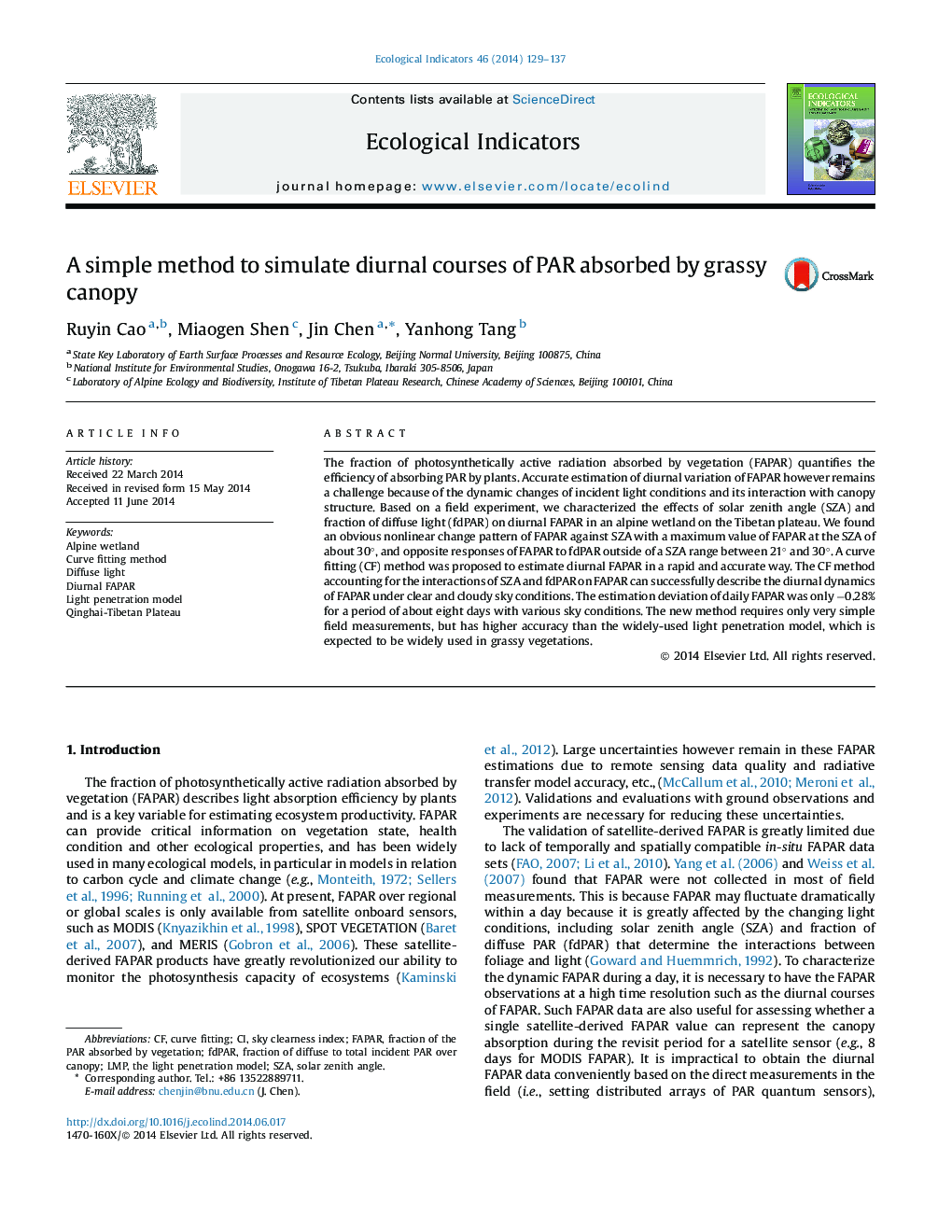| Article ID | Journal | Published Year | Pages | File Type |
|---|---|---|---|---|
| 6294843 | Ecological Indicators | 2014 | 9 Pages |
Abstract
The fraction of photosynthetically active radiation absorbed by vegetation (FAPAR) quantifies the efficiency of absorbing PAR by plants. Accurate estimation of diurnal variation of FAPAR however remains a challenge because of the dynamic changes of incident light conditions and its interaction with canopy structure. Based on a field experiment, we characterized the effects of solar zenith angle (SZA) and fraction of diffuse light (fdPAR) on diurnal FAPAR in an alpine wetland on the Tibetan plateau. We found an obvious nonlinear change pattern of FAPAR against SZA with a maximum value of FAPAR at the SZA of about 30°, and opposite responses of FAPAR to fdPAR outside of a SZA range between 21° and 30°. A curve fitting (CF) method was proposed to estimate diurnal FAPAR in a rapid and accurate way. The CF method accounting for the interactions of SZA and fdPAR on FAPAR can successfully describe the diurnal dynamics of FAPAR under clear and cloudy sky conditions. The estimation deviation of daily FAPAR was only â0.28% for a period of about eight days with various sky conditions. The new method requires only very simple field measurements, but has higher accuracy than the widely-used light penetration model, which is expected to be widely used in grassy vegetations.
Keywords
Related Topics
Life Sciences
Agricultural and Biological Sciences
Ecology, Evolution, Behavior and Systematics
Authors
Ruyin Cao, Miaogen Shen, Jin Chen, Yanhong Tang,
